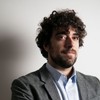Riot police in front of a Gucci store damaged in central Turin on the 26th of October. Photo: Marco Bertorello/AFP via Getty Images.
Italy is in the midst of a severe second wave of the coronavirus pandemic. Last week, after doctors and scientists desperately called on citizens to “stay home”, local authorities from the hardest-hit regions decided to impose curfew measures at night time. On Sunday, the Italian government issued a new decree, forcing bars and restaurants to close at 6PM, while theatres, gyms, swimming pools and cinemas across the county have all been shut.Prime Minister Giuseppe Conte has promised financial aid to mitigate the economic impact of the measures. According to some estimates, the new restrictions could cost €17 billion in the final quarter of the year.Earlier in the spring, during the first lockdown, Italians happily complied to the government’s guidelines. But things have changed: people have been struggling to make ends meet over the past few months, and there’s a widespread feeling that a massive economic crisis might be on the horizon. Protests initially broke out in Naples, in the south of the country, and spread to northern cities. Most were peaceful, but there were a few episodes of violence.On Monday, bar owners gathered in Rome’s central Piazza Trilussa, and poured beer kegs and cans on the ground as a symbol of their losses. In Cremona, a small city in Lombardy, restaurateurs left pans and ladles in front of the city hall as a sign of protest. In Treviso and Vicenza, two wealthy cities near Venice, thousands of business owners and workers gathered in crowds in the historical city centres, begging authorities to let them work.The protests have been supported by right-wing politicians, including Alan Fabbri, a member of the far-right Lega party, who spoke out in solidarity with workers from the city of Ferrara, 50km north of Bologna. During the protests in Trieste, mayor Roberto Dipiazza and governor of the Veneto region Massimiliano Fedriga accused Conte of neglecting the interests of the regions, a talking point often used to discredit Rome’s authority.The far-right took the stage in at least three regions – Verona and Latina, two cities where the neo-fascist groups are very vocal, and in Rome. On the 24th of October 2020, when the curfew was announced in the Lazio region, 200 militants from the neo-fascist party Forza Nuova gathered in the central Piazza del Popolo to protest against the “sanitary dictatorship” supposedly imposed by the Italian government.By midnight, the neo-fascists had exploded smoke bombs and fireworks, and thrown objects at the police officers who were trying to disperse them. They set some dumpsters on fire and damaged vehicles on their way out. In the end, two officers were injured and ten protesters were stopped by the police.More turmoil happened in Naples, Milan and Turin. On the 23rd of October, hundreds of protesters clashed with the police outside the regional administrative building in Naples. According to governor Vincenzo De Luca, among them there were renowned members of the Camorra, football ultras and neo-fascists. Many argued that the majority of the crowd was actually made up of precarious workers, now at risk of losing their jobs.In Turin, hundreds of people clashed with police officers in the central Piazza Castello. After the police used tear gas, some protesters destroyed and looted luxury shops, like the Gucci shop in Via Roma. The police arrested ten people, half of whom were members of Juventus’ official fan group. Many protesters, according to footage circulated on social media, were young and came from the outskirts of the city.On Monday night in Milan, one of the cities hit the hardest by the pandemic, a protest took place in the city centre, made up of around 300 mostly young people. Some threw firecrackers and a molotov cocktail against a police car, while shouting “freedom, freedom, freedom”.According to Roberto Maggioni, a journalist at Radio Popolare, it was not an organised protest. Police stopped and identified 28 people, of whom 13 were underage. Beside one girl, who belonged to an anarchist movement, no one else had any affiliation with known political groups.In the face of violence, the Italian Minister of Interior, Luciana Lamorgese, asked law enforcement to “separate those who protest legitimately from those who just want to wreak havoc”.
Advertisement
Advertisement
